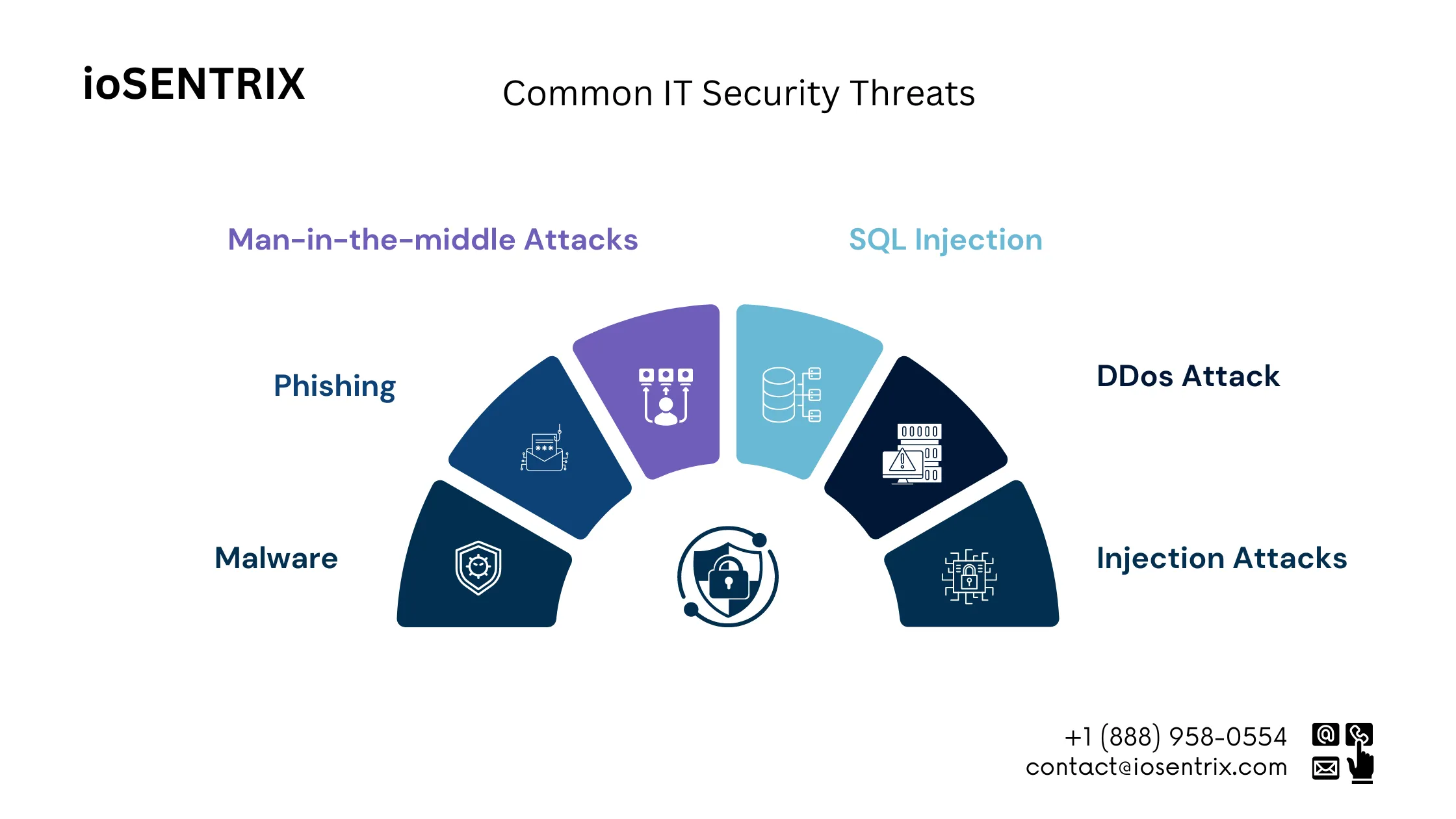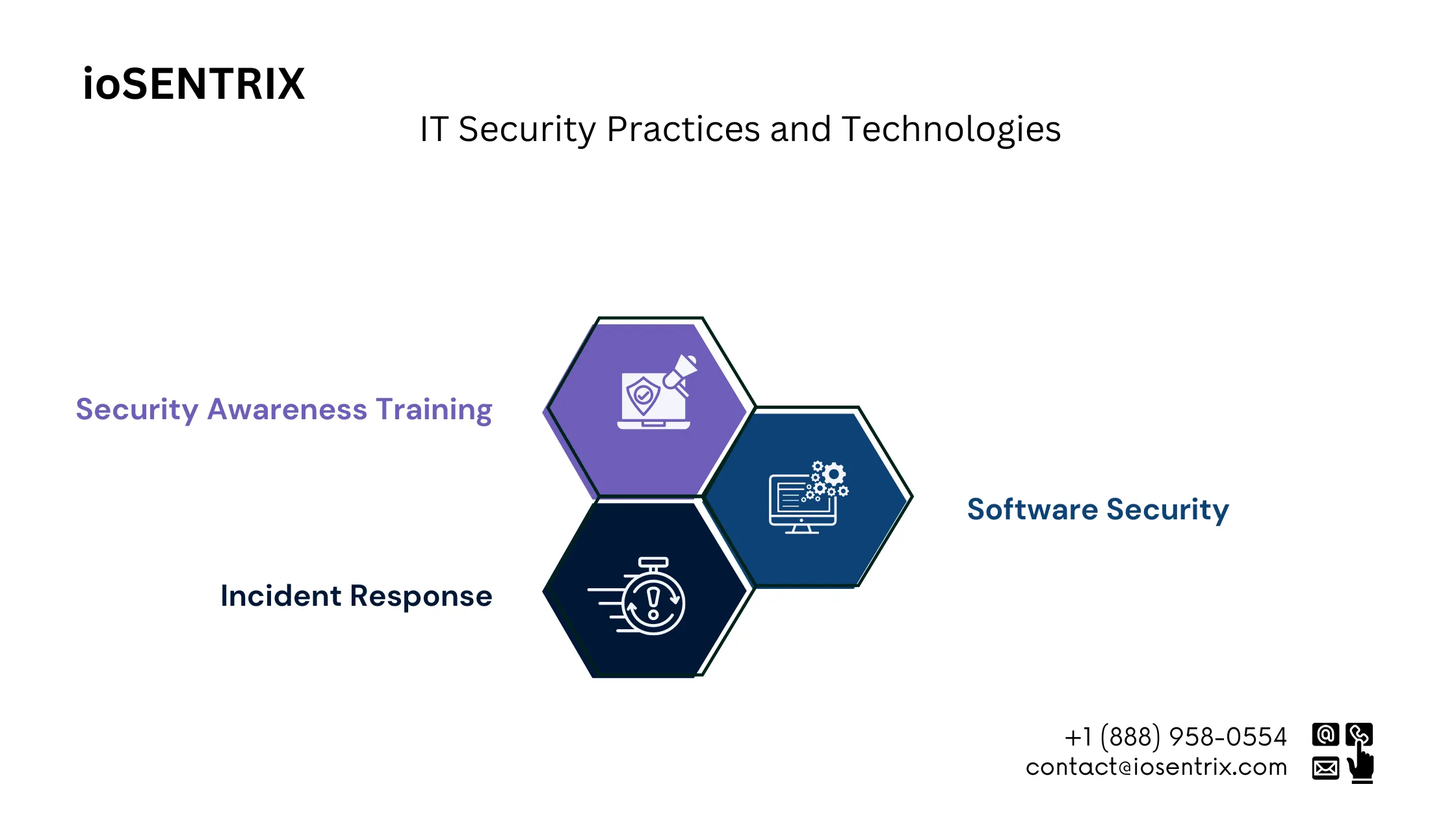
Technology is vital in all areas of our lives, making it essential to understand IT security. Today, businesses must focus on protecting their digital assets to preserve their data and reputation. This comprehensive IT security guide assists in comprehending Information Security (IT), examining various strategies, and emphasizing the significance of deploying efficient security measures.
IT security (or information technology security) involves “Safeguarding an organization’s IT assets such as computer systems, networks, digital devices, and data from unauthorized access, data breaches, cyberattacks, and other harmful activities”. It covers a wide range of technologies and security measures that collaborate to address weaknesses in digital devices, computer networks, servers, databases, and software applications. IT security must adhere to laws, regulations, and guidelines to safeguard business data effectively.
These legal and regulatory frameworks ensure that companies can rely on a comprehensive information protection, encompassing availability, confidentiality, integrity, and authenticity. A neglected part of IT security is the human factor. Although technological tools are vital for protecting systems, human mistakes can pose a substantial risk. For instance, phishing attacks depend on tricking individuals into disclosing sensitive data. This highlights the need for thorough employee training initiatives to boost awareness of cybersecurity.
There is a common misconception between IT security and cybersecurity, but they have clear distinctions. IT security focuses on safeguarding systems from unauthorized access, whereas cybersecurity is aimed at protecting data.
IT security involves a wide range of tasks, such as securing physical devices and establishing secure network connections. This includes protecting servers, routers, switches, modems, and other devices used for storing or transmitting data.
The essence of both IT security and cybersecurity is to shield your valuable data from breaches by securing networks and data in a structured manner that hinders attackers from navigating between systems.
Prioritizing IT security is crucial for all businesses, regardless of size or industry. Cyberattacks can result in substantial financial losses, harm to reputation, and legal issues. By emphasizing IT security, businesses can safeguard their valuable digital assets, customer data, and intellectual property. The effects of a security breach go beyond immediate financial losses. Losing customer trust can harm a company’s long-term financial health and market position. Therefore, investing in IT security is not only about following rules but also a crucial business strategy. Information security consists of the fundamental principles known as the CIA triad: Confidentiality, Integrity, and Availability.
These pillars form the foundation of a strong information security framework, guiding organizations in planning strategies that effectively safeguard their data assets. Availability ensures that information systems remain operational and accessible when required. Particularly crucial in collaborative environments where seamless data access is extremely important, availability plays a pivotal role in facilitating uninterrupted user interactions.
Different methods exist for IT security, each having specific security measures. Understanding these methods is crucial to select the ones that suit your business best.

Common approaches include firewalls, intrusion detection systems, antivirus software, encryption, and employee training.
Endpoint security is a type of IT protection that focuses on keeping your devices and the software safe. This includes using features like two-factor authentication, passwords, and encryption to secure your computers and mobile devices. Firewalls are another way to protect your computers. They can be software or physical devices that filter network traffic, stopping unauthorized access from the Internet to your company’s local networks. Operating systems like Linux and FreeBSD give administrators the ability to control which applications can run on their systems and who can use them.
Some systems even let developers create virtual machine environments that isolate programs in separate sandboxes, giving control over which other programs they can interact with. Additionally, new paradigms like zero-trust security models are becoming more popular in cybersecurity. These models work on the idea of “never trust, always verify,” demanding ongoing authentication and authorization for all devices and users trying to access network resources.
These include malware attacks, phishing attempts, ransomware, social engineering, and insider threats. Understanding these threats can help organizations develop effective countermeasures. Injection attacks exploit weaknesses to insert harmful input directly into applications, servers, or third-party code libraries used by organizations. SQL injection is a cyberattack method that uses SQL to seize control of a database and access sensitive data. Attackers can implant malicious code into SQL statements or exploit vulnerabilities in data-driven applications to gain unauthorized access.
Phishing is a deceptive cyber attack that employs social engineering to deceive individuals into divulging personal or financial information, often through misleading emails that appear legitimate, such as those mimicking banks or popular online platforms.

Man-in-the-middle attacks involve intercepting communications between users and applications, enabling attackers to spy and obtain sensitive data. Denial-of-service (DoS) attacks disrupt computer systems, rendering them inaccessible for regular use. In Distributed Denial-of-Service (DDoS) attacks, multiple machines inundate a service or server with excessive traffic, overwhelming its network and rendering it inoperable. Malware poses another significant cyber threat by targeting system data and files. Infections can spread through corrupted files or an operating system, resulting in substantial damage and disruption.
With the rise of increasingly intense and complex cybersecurity threats, organizations are implementing IT security strategies that integrate various security systems, programs, and technologies. These IT security methods and technologies can safeguard an organization’s entire IT setup, helping to prevent or reduce the effects of both familiar and unfamiliar cyber threats.
While no single security tool can completely stop cyberattacks, several tools can help reduce cyber risks, prevent attacks, and limit damage when they occur. Common security software that aids in detecting and deflecting cyberattacks includes: Email security tools, such as AI-powered anti-phishing software, spam filters, and secure email gateways Antivirus software to combat spyware or malware that attackers may use to breach network security, gather information, listen in on conversations, or take control of email accounts System and software patches to fix common technical vulnerabilities exploited by hackers Secure web gateways and other web filtering tools to block malicious websites often associated with phishing emails.
Threat detection and response solutions that utilize analytics, artificial intelligence (AI), and automation to help security teams identify known threats and suspicious activities. These tools empower security teams to respond promptly to eliminate threats or reduce their impact. Examples include security orchestration, automation, and response (SOAR), security incident and event management (SIEM), endpoint detection and response (EDR), network detection and response (NDR), and extended detection and response (XDR).

Incident response, also known as cybersecurity incident response, involves an organization’s methods and tools for spotting and handling cyber threats, security breaches, and cyberattacks. The aim is to prevent cyberattacks and reduce the impact and costs of any that do occur. Numerous organizations develop a structured incident response plan (IRP) that outlines the steps and security tools they employ to detect, control, and resolve various cyberattacks.
Training programs educate employees on identifying security risks and adopting safe practices in the workplace. Common topics include recognizing phishing scams, maintaining secure passwords, updating software regularly, and understanding privacy concerns related to safeguarding customer data and sensitive information.
The success of an IT security program relies on the tools accessible to the security team. Operating with a fragmented and intricate security setup facilitates the quick identification and handling of incidents. ioSENTRIX aids organizations in building a cohesive and thorough security structure. Our IT security solutions encompass products for network, cloud, secure user access, and unified threat visibility and management.